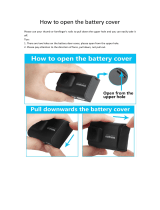
6
9.1.2
Backrest adjustment........................................................................................................55
9.1.3 Adjusting the headrest.....................................................................................................58
9.1.4 Adjusting the height of the armrests................................................................................59
9.1.5 Adjusting the height of the sideframes ............................................................................59
9.1.6 Seat width adjustment: ....................................................................................................59
9.1.7 Adjusting the pommel:.....................................................................................................60
9.2 Recaro Seats......................................................................................................................61
9.2.1 Recaro "N-Joy" and "Miles" (mechanically adjustable)...................................................61
9.2.2 Recaro Ergomed DS (electrically adjustable):.................................................................62
9.3 Invacare® Ultimate and Personal Special Seating Systems..............................................63
9.3.1 Adjusting the seat tilt........................................................................................................63
9.3.2 Seat version: Personal.....................................................................................................64
9.3.2.1 Adjusting the height of the back ...................................................................................64
9.3.2.2 Adjusting the backrest angle ........................................................................................65
9.3.3 Seat version: Ultimate......................................................................................................67
9.3.3.1 Adjusting the height of the back ...................................................................................67
9.3.3.2 Adjusting the backrest angle ........................................................................................68
9.3.3.3 Adjusting the inflatable cushions..................................................................................69
9.3.3.4 Removing the backrest.................................................................................................70
10
Footrests and Legrests.................................................................72
10.1 Footrests...........................................................................................................................72
10.1.1 Footrest (standard)........................................................................................................72
10.1.1.1 Removing the Footrest ...............................................................................................73
10.1.1.2 Footrest: Adjusting the Angle .....................................................................................74
10.1.1.3 Footrest: Adjusting the Length....................................................................................75
10.1.1.4 Footrest: Adjusting the Angle of the Footplate (Option).............................................75
10.2 Legrests............................................................................................................................76
10.2.1 Settable Legrest (Option)...............................................................................................76
10.2.1.1 Removing the Legrest.................................................................................................77
10.2.1.2 Settable legrest: Adjusting the Angle..........................................................................78
10.2.1.3 Settable legrest: Adjusting the Length........................................................................79
10.2.1.4 Settable legrest: Adjusting the Angle of the Footplate ...............................................79























